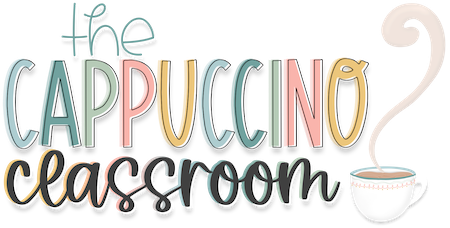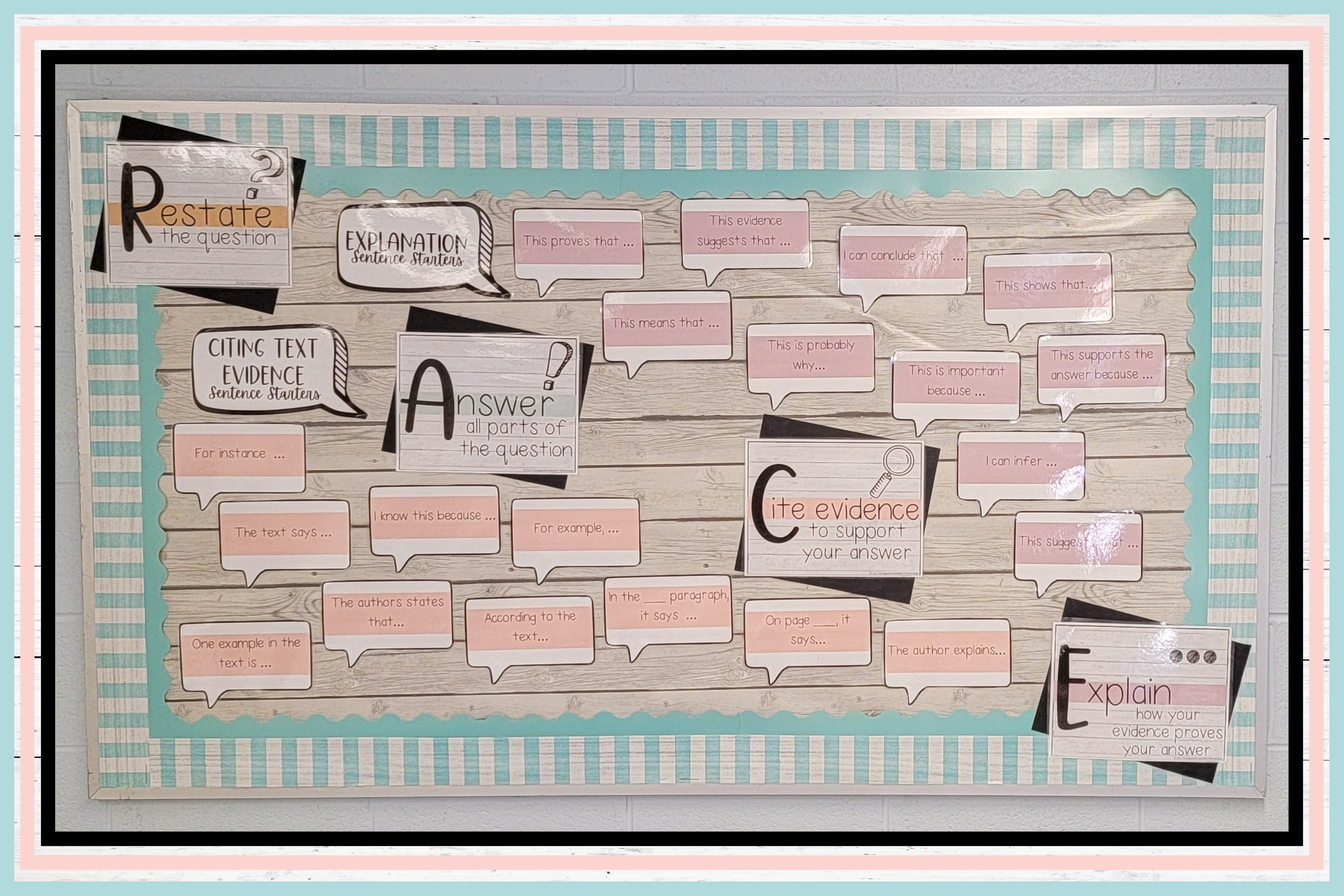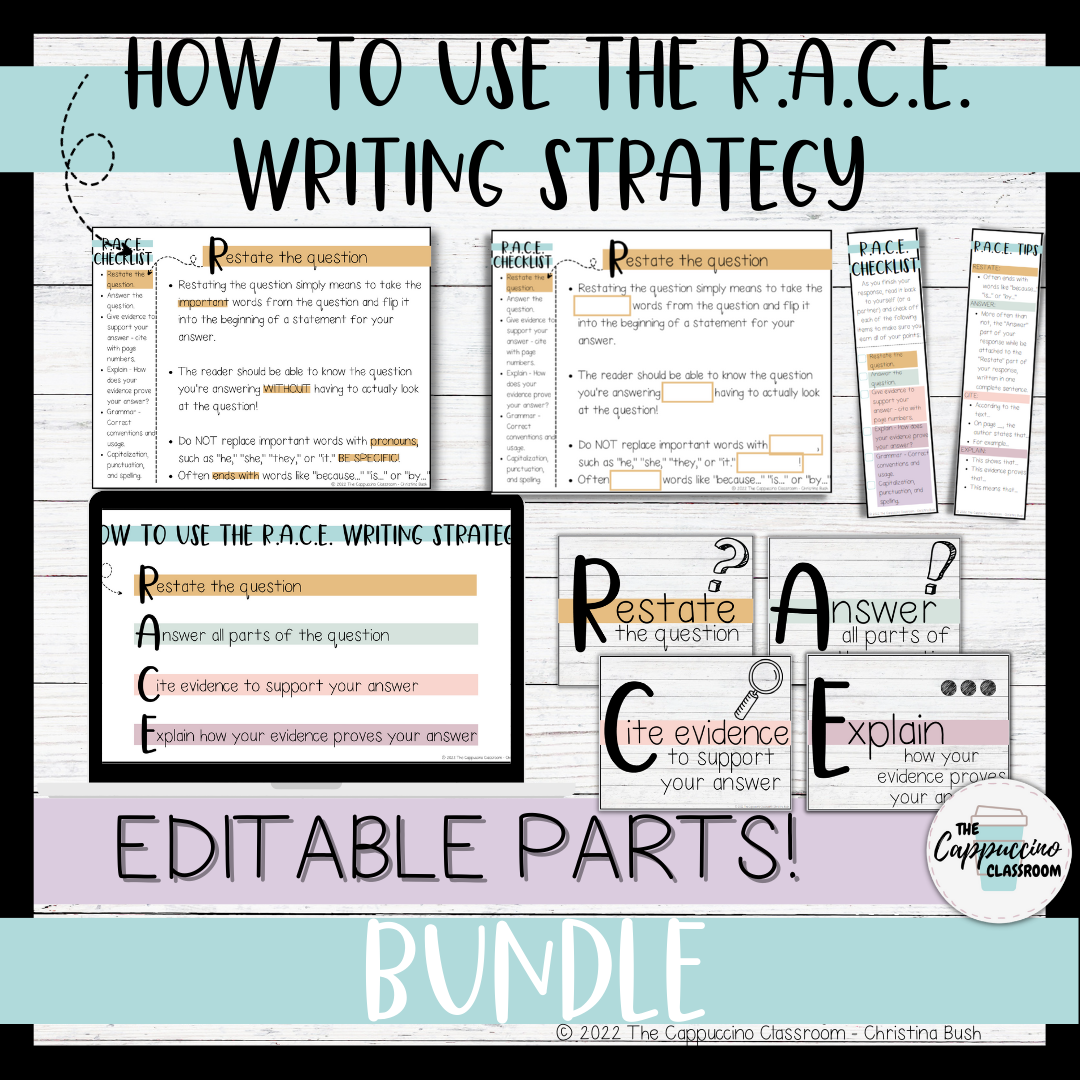
Answering text-dependent questions is a vital skill that is introduced to students in as early as first grade. As a matter of act, most (if not all) state assessments require students to answer text-dependent questions every year. That is why I think it is one of the most important skills we could teach our students, and one of the easiest!
There are several strategies out there on how to teach this process. In this blog post, we will focus on the writing strategy called R.A.C.E, which stands for:
Restate
Answer
Cite
Explain
In the lower grade levels, responses to these text-dependent questions are very simple:
Q: What is one character trait of Anne Frank?
A: She’s positive.
While this response is not technically wrong, it is definitely lacking. If we were to simply analyze the answer (She’s positive.), we would not know what question was asked, who “she” is, where the student got this information, or how they came up with that answer. As students get older, they are required to add a little bit more to their response.
Which brings me to step 1: Restate.
Restating the question is a tough task at first, but once students get the hang of it, it becomes almost second-nature! It simply means to take the important words from the question and flip it into the beginning of a statement for your answer. Basically, the reader should be able to know the question you’re answering WITHOUT having to actually look at the question.
I also make sure to tell students that they should NOT replace important words with pronouns, such as “he,” “she,” “they,” or “it.” BE SPECIFIC!
Restating often ends with words like “because…” (why questions) “is…” (what questions) or “by…” (how questions) because it will most likely be the first half of a sentence, followed by their answer.
Q: What is one character trait of Anne Frank?
A: One character trait of Anne Frank is…
Now on to step 2: Answer.
This can be the easiest step for students, because this is the part they’re used to doing. When they’re asked a question, they’ve been told to provide an answer. More complex questions require more complex answers, of course, but the framework works just as well.
Answering the question means to answer ALL parts of the question, as there may be more than one question being asked.
More often than not, the “Answer” part of their response will be attached to the “Restate” part of their response, written in one complete sentence.
Q: What is one character trait of Anne Frank?
A: One character trait of Anne Frank is that she is a very positive person.
Now it’s time to back up that answer with step 3: Cite.
Citing evidence means to find key details and facts from the text to prove and/or support their answer. There may be several examples in the text to choose from, which is great, but it is important for students to try to find the evidence that fits their answer best.
This is also the time were I introduce citations to students, which means to include page numbers (or paragraph/line numbers if using a shorter text). It’s important to give credit where credit is due!
When I first introduce this concept to students, I don’t go as far as MLA format or anything like that. I usually just give them a few good sentence starters that help them to incorporate those page numbers, or have them put the page number(s) in parentheses at the end of their evidence. This is perfectly acceptable, especially when they only have one text option to find their evidence. This means the author is implied, it’s just the page number that’s really needed.
Example Sentence Starters:
According to the text…
On page ___, the author states that…
For example…
Q: What is one character trait of Anne Frank?
A: One character trait of Anne Frank is that she is a very positive person. On page 234, the text says, “I still believe, in spite of everything, that people are truly good at heart.”
Last, but certainly not least, step 4: Explain.
This is hands-down the hardest step for students to grasp. As the years have gone by, I have found different and clearer ways to describe this step to students.
The most basic way to say this step is to tell students to explain why the evidence they chose best supports their answer. Of all the words, of all the sentences, in this text… why this one? Why did they choose this particular piece of evidence to prove their answer? Why was this the best one?
Ultimately, they should make the connection between the answer they gave and the text evidence they chose to support their answer.
Example Sentence Starters:
This shows that…
This evidence proves that…
This means that…
Q: What is one character trait of Anne Frank?
A: One character trait of Anne Frank is that she is a very positive person. On page 234, the text says, “I still believe, in spite of everything, that people are truly good at heart.” This shows that even though Anne and her family are facing many life-threatening hardships, she still decides to see the good in everyone and everything.
Using the R.A.C.E. writing strategy takes time and consistency to show real results, which is why I keep these posters and sentence starters displayed in my classroom all year long! I reference them all the time and I find students going up to the board when they need to! This is super beneficial to those visual learners, but honestly, each and every one of my students appreciates something nice to look at when they’re “stuck” inside all day. Who said ELA had to be gray and boring? Let’s add some color!
Psst… If you want to snag a taste of these posters for FREE… click here 😉
Back to that consistency I was talking about… as a teach, I’m sure you know that “consistency is key” when it comes to teaching ANYTHING. Otherwise, it goes in one ear and out the other, am I right?
Here are a few ways to get your students using the R.A.C.E. writing strategy all year long:
- Reading Responses (this is my favorite 😍)
- Bell Ringers
- Exit Tickets
- Informational Texts (in addition to the literature texts you’re already using)
- Literally anything that requires them to read a text and answer a question
If you don’t want to focus on the Cite & Explain steps at first, you don’t even need a text to practice Restating & Answering! You could literally ask any question and have them practice the first two steps to this process, and then add the rest of the steps along the way!
I hope this writing strategy is the game-changer for you and your students like it was for me and mine!
Let me know… Have you heard of this strategy before? Or do you use a difference strategy? 👇🏼

Resources in this blog post:
- Google Slides Presentation | Graphic Organizer | EDITABLE
- Printable Presentation | Graphic Organizer
- Printable Bookmarks Checklist | Color & Black and White
- Printable Guided Notes | Color-Coded & Black and White
- Color-Coded Printable Bulletin Board Posters Set
Or… Snag the whole bundle below!



